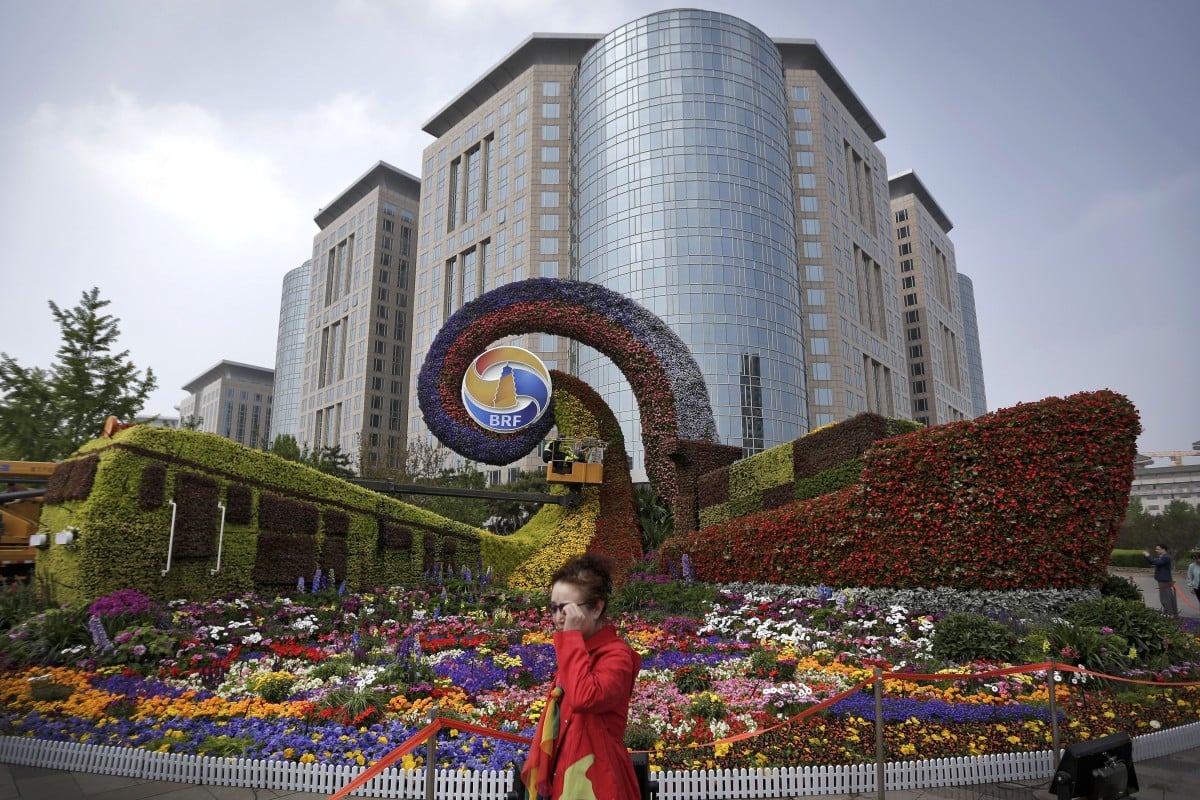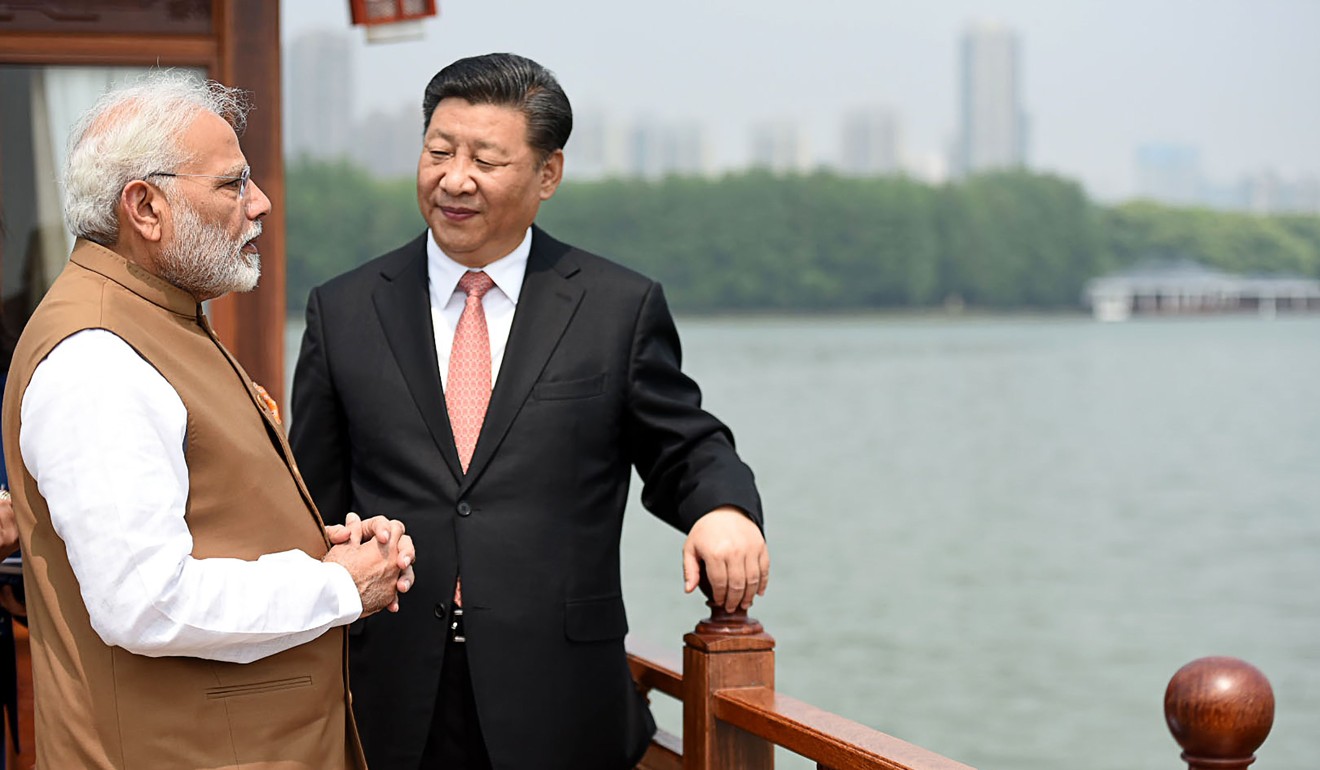Ananth Krishnan
 The three-day Belt and Road Forum starts on Thursday in Beijing. As leaders from 37 countries and representatives from close to 150 nations gather in Beijing this week for the second Belt and Road Forum, India will be one prominent absentee. As was the case with the inaugural event two years ago, New Delhi will once again not be represented at any level at the event, underlining its official opposition to the
The three-day Belt and Road Forum starts on Thursday in Beijing. As leaders from 37 countries and representatives from close to 150 nations gather in Beijing this week for the second Belt and Road Forum, India will be one prominent absentee. As was the case with the inaugural event two years ago, New Delhi will once again not be represented at any level at the event, underlining its official opposition to the
Belt and Road Initiative. New Delhi’s decision to boycott the forum in 2017 was expected to leave India isolated and plunge an already complex relationship with China into outright hostility, considering the importance of the event to President Xi Jinping. However, two years later, contrary to those expectations, India and China have moved to stabilise their relationship as well as better manage their differences.
This was evident in the comments of State Councillor and Foreign Minister Wang Yi on the eve of the forum. Rather than emphasise the differences between the two countries, he announced they were already working on holding a second “informal summit”.
It was the first summit, in Wuhan in April 2018, that helped pave the way for both countries to recalibrate their relations after a difficult phase. Less than two months after the boycott of Beijing’s grand infrastructure programme, the two countries grappled with a 72-day stand-off near the Doklam plateau that borders India, China and Bhutan.
Managing the border peacefully was one important consensus reached in Wuhan. Another agreement that received less attention was the attempt to manage – if not resolve – their differences over Beijing’s vast infrastructure projects. A greater sense of pragmatism on both sides is one lasting outcome from Wuhan: Beijing is aware its decision to include the China-Pakistan Economic Corridor, which passes through Pakistan-administered Kashmir, left India with little choice but to stay away from the initiative.
Endorsing the belt and road strategy would have had also had serious ramifications for India in the future regarding its own territorial claims vis-à-vis Pakistan. Vikram Misri, the Indian ambassador to Beijing, explained to Chinese state media India’s concerns, saying connectivity initiatives must “follow principles of openness, transparency and financial sustainability” and “pursued in a manner that respects sovereignty, equality and territorial integrity of nations”.
“No country can participate in an initiative that ignores its core concerns on sovereignty and territorial integrity,” Misri said.
India, for its part, would have noticed its stand has had limited influence on whether other countries have decided to participate, including neighbours Nepal and Sri Lanka, which are more concerned with domestic investment and infrastructure.
Notwithstanding problems involving some regional projects and concerns over terms of financing, Chinese investment remains a necessity for many of these countries.
Although India and China do not see eye to eye, the post-Wuhan approach appears driven by pragmatism. It is less concerned about convincing or pressuring the other side to change its tune, and is instead focused on finding avenues of cooperation, whether through Chinese projects in India or in cooperating in third countries.
Despite India’s stance, Chinese investments into the country have soared since 2014, with close to 80 per cent of the total US$8 billion Chinese funding in New Delhi coming in this period. Cooperating in third countries, however, remains a work in progress. China’s Vice Foreign Minister Kong Xuanyou announced after the Wuhan summit “there will be more
China-India projects in the region in the pipeline, some of which will involve a third-party”.

“When it comes to connectivity my impression is China and India do not have any principled disagreements,” he said, identifying the slow-moving Bangladesh-China-India-Myanmar (BCIM) economic corridor as an example.
The BCIM is one example of this pragmatism: China has identified it as one of the six main land corridors of the belt and road strategy, although India’s position is that it has nothing to do with the belt and road as it long predates it.
Wang, the Chinese foreign minister, said last week China’s hope was for “issues left over from history”, such as the Kashmir problem, to be “separated from our efforts” on the belt and road strategy. That may be hard for India, but as far as the respective governments are concerned, at least for the moment, New Delhi and Beijing appear content to agree to disagree.
No comments:
Post a Comment